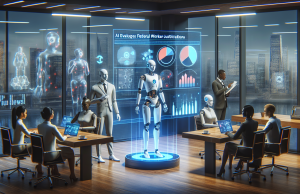In today’s rapidly evolving economy, workers and industries worldwide are grappling with a formidable challenge: the Skill Gap. The digital transformation and heightened automation have revolutionized how we work, but they’ve also sparked a growing divide between the skills workers possess and those now required by the modern marketplace. As a staunch advocate for trade school and vocational training, I believe that understanding this gap and devising solutions to bridge it are imperative for ensuring a robust and equitable global economy.
The current state of the global skill gap has profound implications for both workers and economies. Industries such as technology, healthcare, and manufacturing are experiencing major shifts that necessitate new skills. Traditional roles are being redefined or replaced, while emerging jobs demand proficiencies in areas like artificial intelligence (AI), data analytics, and renewable energy.
This chasm in the labor market poses a threat to the livelihoods of millions. Without requisite skills, workers face the risk of unemployment or underemployment, while employers struggle to find suitable talent, hampering productivity, and innovation. Moreover, the skill gap is not uniform across regions or industries. Developing countries, for instance, may face a more acute shortage of skilled labor in technology-driven fields compared to developed nations, exacerbating global inequalities.
So, what are the strategies to equip workers for the future? Lifelong learning and vocational training are at the forefront of the solution. By promoting continuous education and skill acquisition, workers can remain adaptable and competitive. Trade schools and vocational programs play a pivotal role here, offering targeted and practical training that aligns with industry needs.
For lifelong learning to be effective, however, it must be accessible and relevant. Online courses, microcredentials, and apprenticeship programs provide flexible and cost-effective avenues for upskilling. Moreover, these programs must be dynamic, evolving with industry trends to provide cutting-edge skills that empower workers not just for today’s jobs but for the careers of tomorrow.
Addressing the skill gap requires a concerted effort from governments, educational institutions, and corporations. Governments must invest in educational infrastructure, provide incentives for skill development, and create policies that encourage workforce resilience. Educational institutions should foster robust partnerships with industries to ensure curriculum relevance and enhance job readiness. Meanwhile, corporations must prioritize employee development, offering training programs that help workers adapt and grow within their roles.
Collaboration is key to creating a labor market that’s inclusive and capable of weathering the pace of change. Governments can provide frameworks and support, educational institutions can deliver the training, and corporations can ensure that learning is continuous and aligned with industry demands.
In conclusion, the global workforce is at a critical juncture. The skill gap presents a challenge, but also an opportunity for societies to innovate, collaborate, and invest in the human capital that will lead to a more prosperous future. The question remains: Will we rise to the occasion and bridge the divide, or will we allow the gap to widen, to the detriment of workers and economies alike? The answer lies in our collective commitment to fostering an adaptable, skilled, and future-ready global workforce.

























